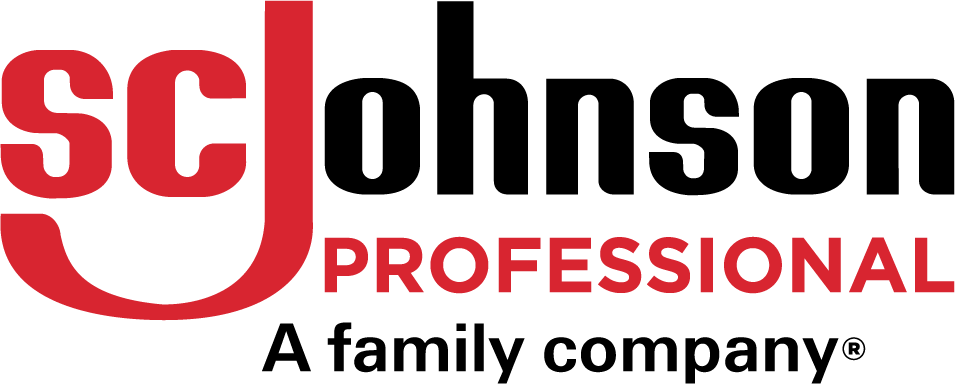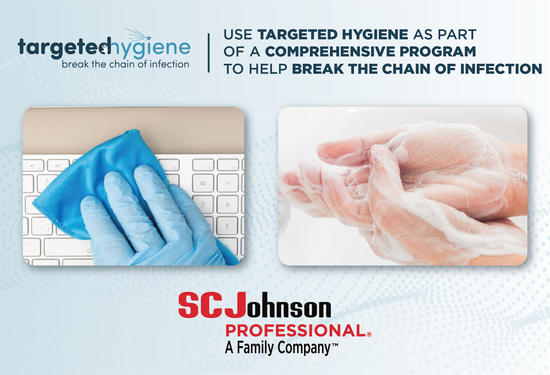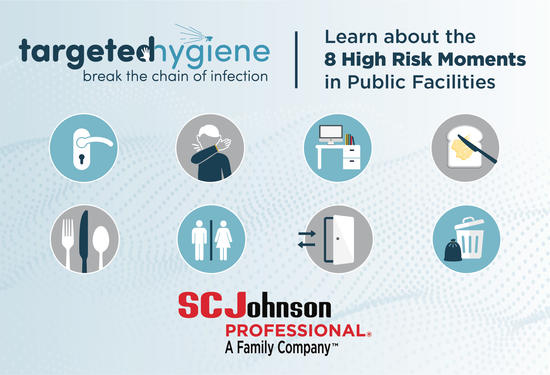Preventative Measures to Stop the Spread of Germs in Facilities
By Dr. Elizabeth A. Scott, Ph.D. IFH Scientific Advisory Board Member on Behalf of SC Johnson Professional
Dr. Elizabeth Scott, PhD.

Elizabeth A. Scott, Ph.D., is an International Scientific Forum on Home Hygiene (IFH) Scientific Advisory Board member. She is a professor and consultant with expertise in home and community hygiene and infection control. She is a consultant for SC Johnson Professional, who has partnered with Dr. Scott to produce a series of articles and educational resources in response to the COVID-19 pandemic.
As public facilities such as offices, schools and restaurants increase their capacities, it’s important to remember how easily germs can spread. Many people interact with each other and touch common surfaces in public spaces, making the risk of infection transmission high. Businesses must understand the role personal hygiene behavior plays in the health and wellness of their building occupants to help reduce the spread of germs.
How Germs Spread
The primary sources of infection in many settings are people and contaminated food. Hands can play a big role in infection transmission. Infectious pathogens can spread from our hands to other people from frequently touched surfaces such as doorknobs, light switches, desks, railings, keyboards, toilet handles and sink faucets. While frequent cleaning and disinfection play a significant role in reducing the number of pathogens on a surface, practicing proper hand hygiene is critical.
The Perception of Hand Hygiene Pre-Pandemic
Before the pandemic, the importance of hygiene practices was not always well understood. We must continue to be mindful of the importance of hand and surface hygiene as we move toward a post-pandemic environment in order to help reduce the spread of infectious pathogens, including antibiotic resistant bacteria. Facility managers will need to promote good hygiene practice that includes both hands and surface hygiene.
The 8 Moments
There are eight moments where the risk of infection transmission is highest in everyday life settings, and these eight moments should drive behavioral change. By focusing on these eight moments, facility managers can establish an effective hygiene infrastructure supporting both hand and surface hygiene for building occupants. The eight moments include:
- Touching common surfaces
- After coughing, sneezing, blowing your nose
- Returning to and leaving your workspace
- Getting food prepared
- Eating food
- Touchpoints in a restroom
- Entering and exiting the building
- Disposing of waste
While most facilities will encounter these eight scenarios or “moments of risk,” each facility will have its unique combination of these moments and this will require a tailored approach. For example, some facilities may have automatic doors in entryways, while others need to turn a door handle to open and close doors. The moments are common to all, but managers can put the proper cleaning solutions in place based on the moments most applicable to their facility.
Best Practices for a Targeted Hygiene Infrastructure
Install a hygiene infrastructure that supports your facility and minimizes the risk of infection transmission. Hygiene infrastructure best practices include:
- Understanding the risk: Whether your facility holds 100 or 1,000 occupants, understanding the risk moments can help achieve the appropriate hygiene infrastructure. For example, focusing on high-touch surfaces such as door handles, grab rails, etc., helps prevent you from spreading pathogens to others while also protecting you from getting infected.
- Educate building occupants: Educating building occupants on the eight moments of high-risk transmission and proper handwashing protocols, including washing hands with soap and warm water for 20 seconds, can help redefine personal hygiene behavior culture within a facility setting. This ensures that the risk moments are precise and defined and allows building occupants to recognize where behavioral change may be needed to help promote a healthy public space or workplace.
- Making Hand Hygiene Products Available: Providing sufficient supply of hand hygiene products with proper placement is essential. Facility managers should monitor hand soap and sanitizer dispensers to avoid lapses in availability. Provide a sanitizer with at least 60% percent alcohol. Strategically place hand sanitizer dispensers, either wall-mounted or free-standing, near entries and exits, high-traffic common rooms, next to elevators and staircases, and outside of restrooms.
- Identify areas to disinfect: Not all areas need frequent disinfecting. Facilities must consider the surfaces that are likely to become contaminated each day and use products with proven kill claims displayed on labels. A helpful tip includes asking yourself five questions that address the Who, What, Where, When and How of disinfecting when developing a disinfecting program that addresses high-touch surfaces.
The Never-Ending Cycle
Preventing the spread of pathogens will continue to stay top of mind long after the COVID-19 pandemic has subsided. Facilities managers must remember that viruses such as norovirus, the influenza virus and new and emerging pathogens may continue to pose a risk to building occupants. There will always be a need to break the chain of infection and adopt a Targeted Hygiene approach to help facility managers now and in the future.



